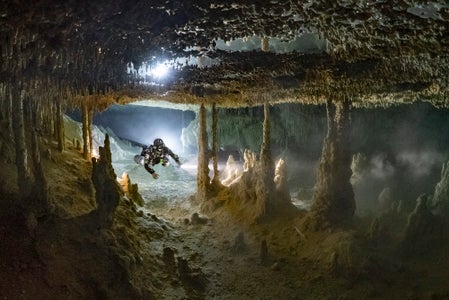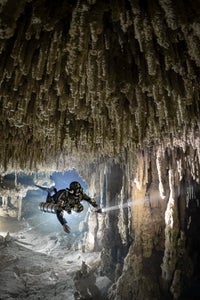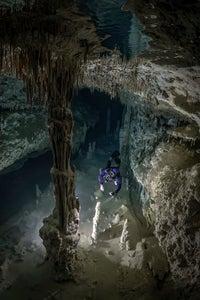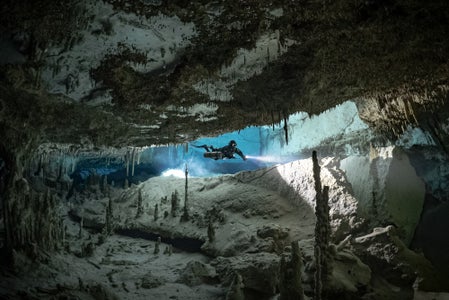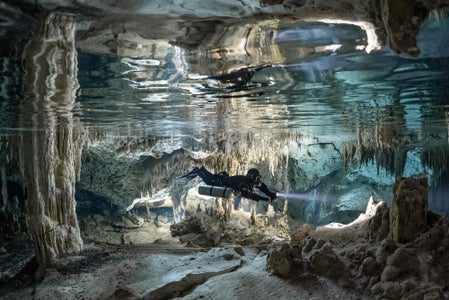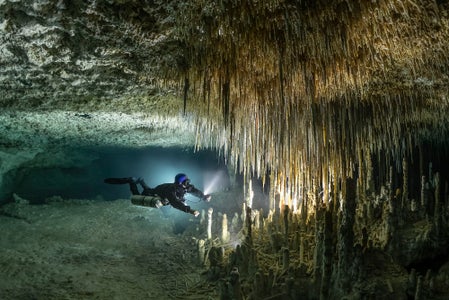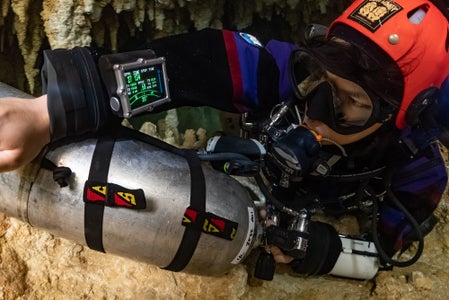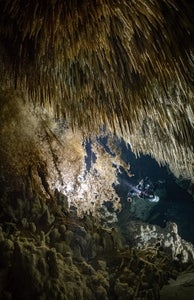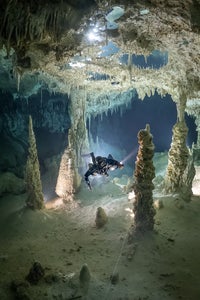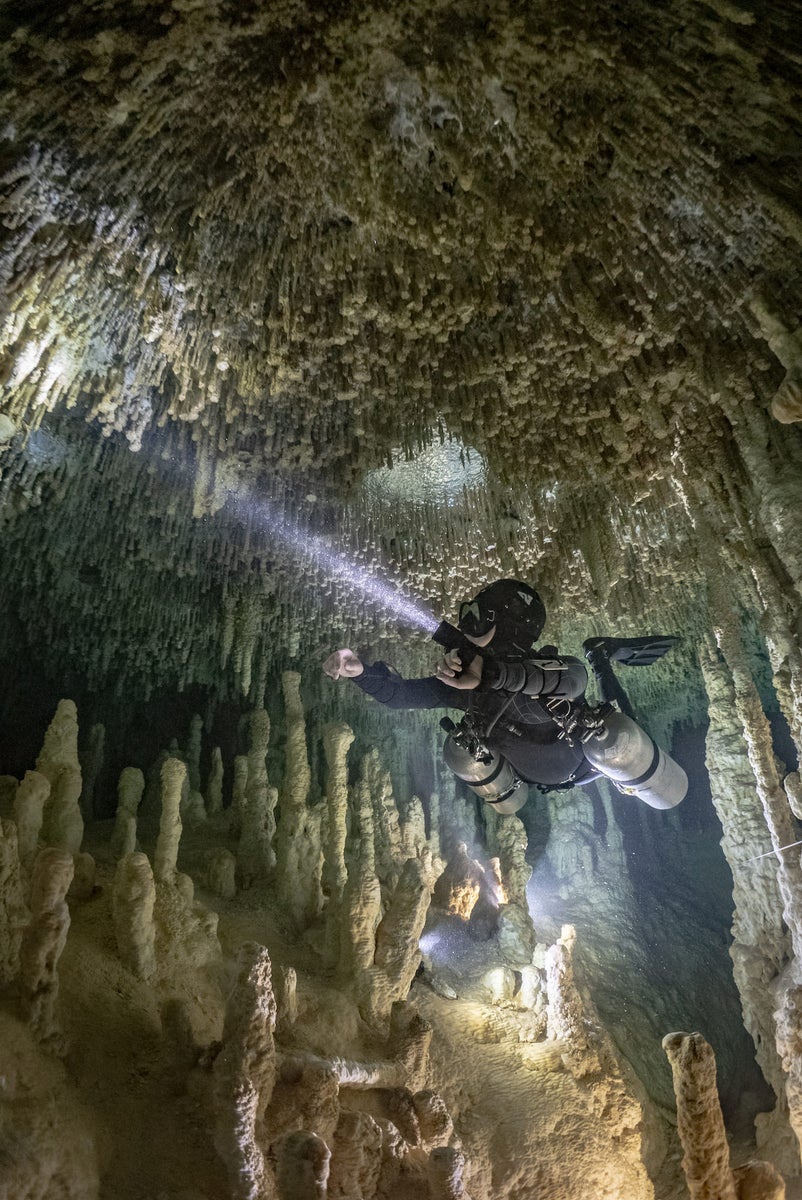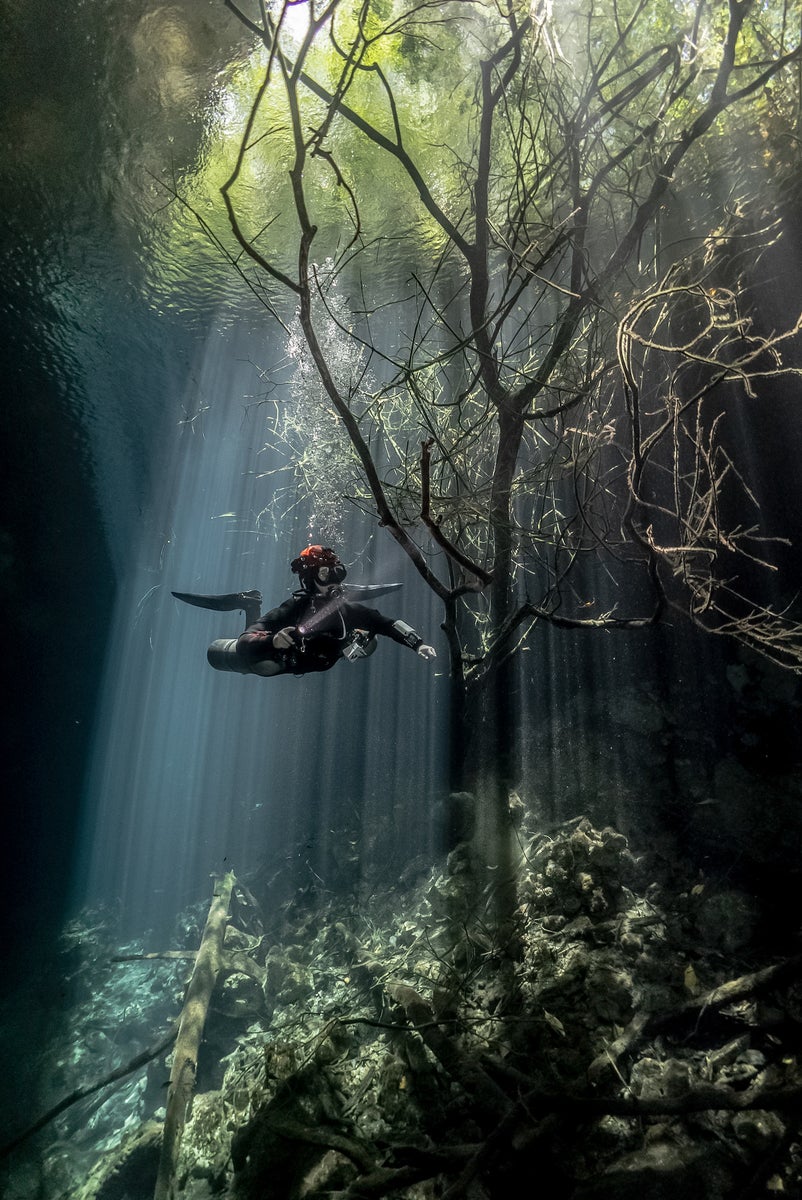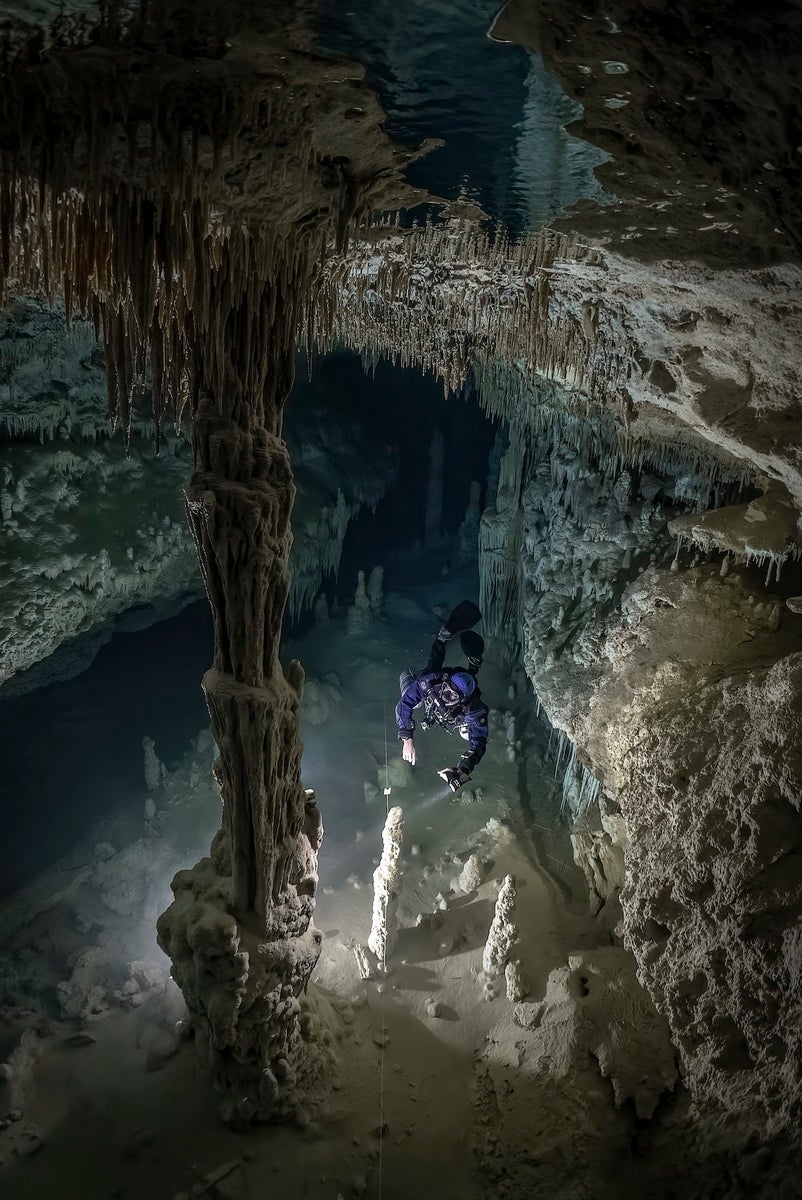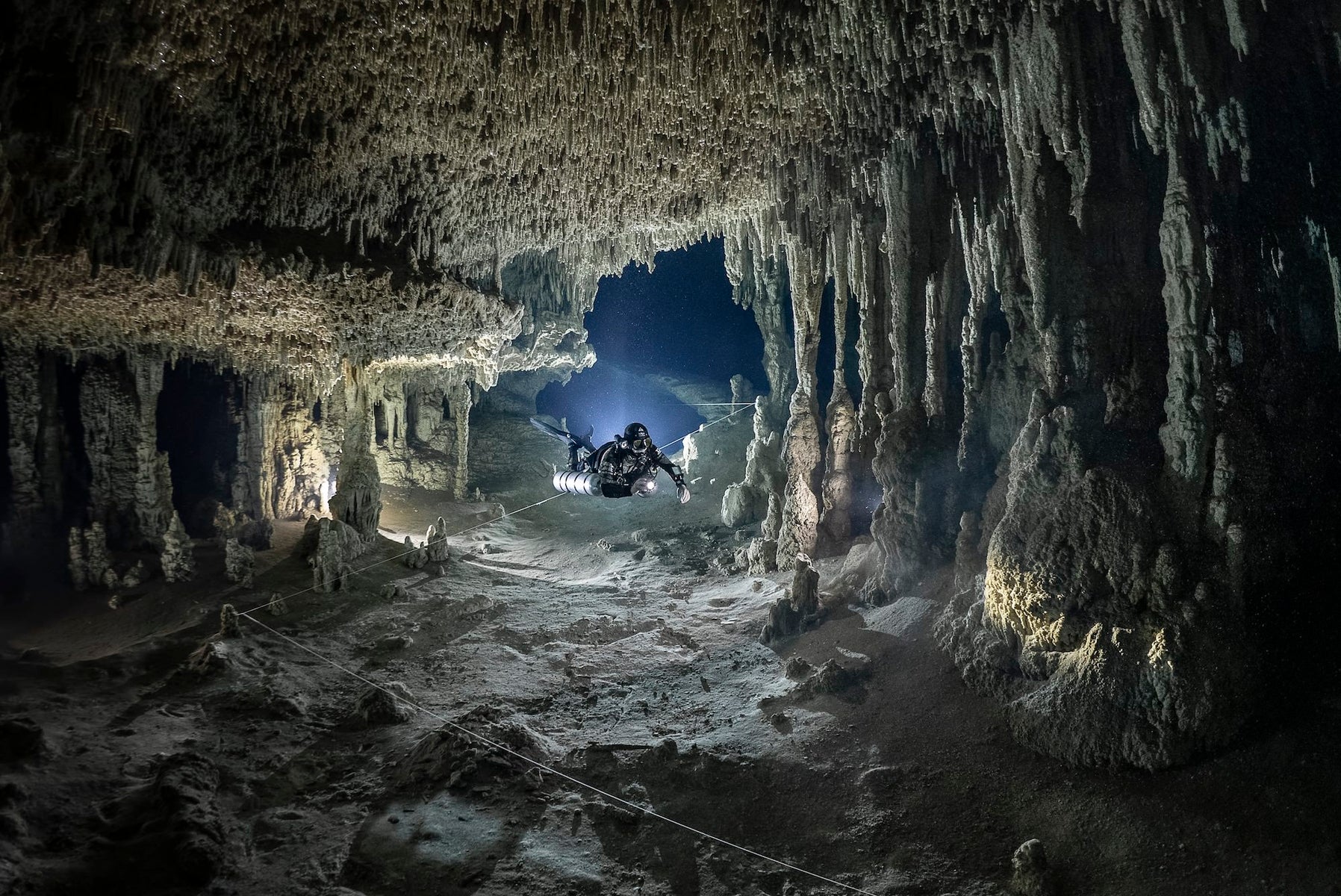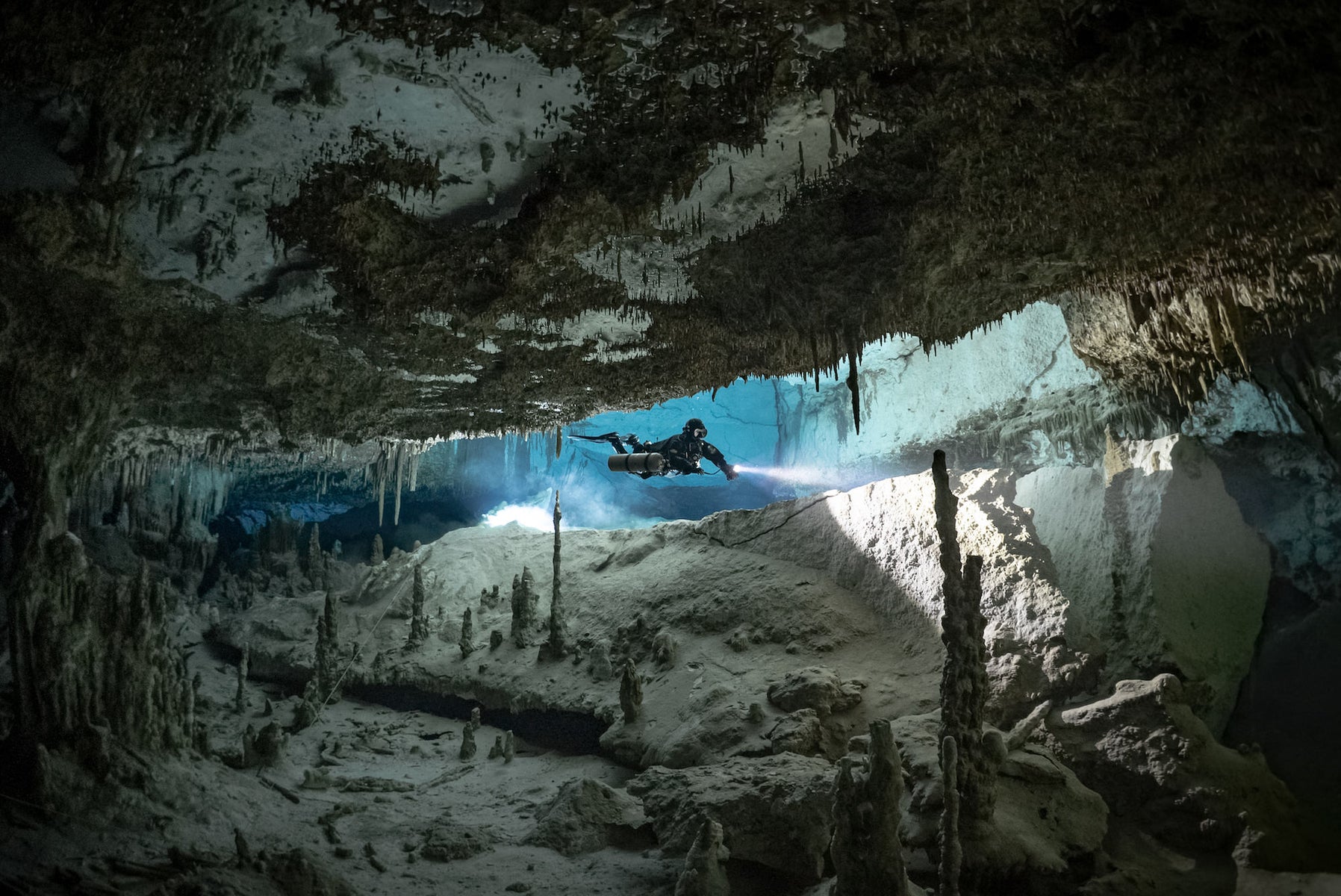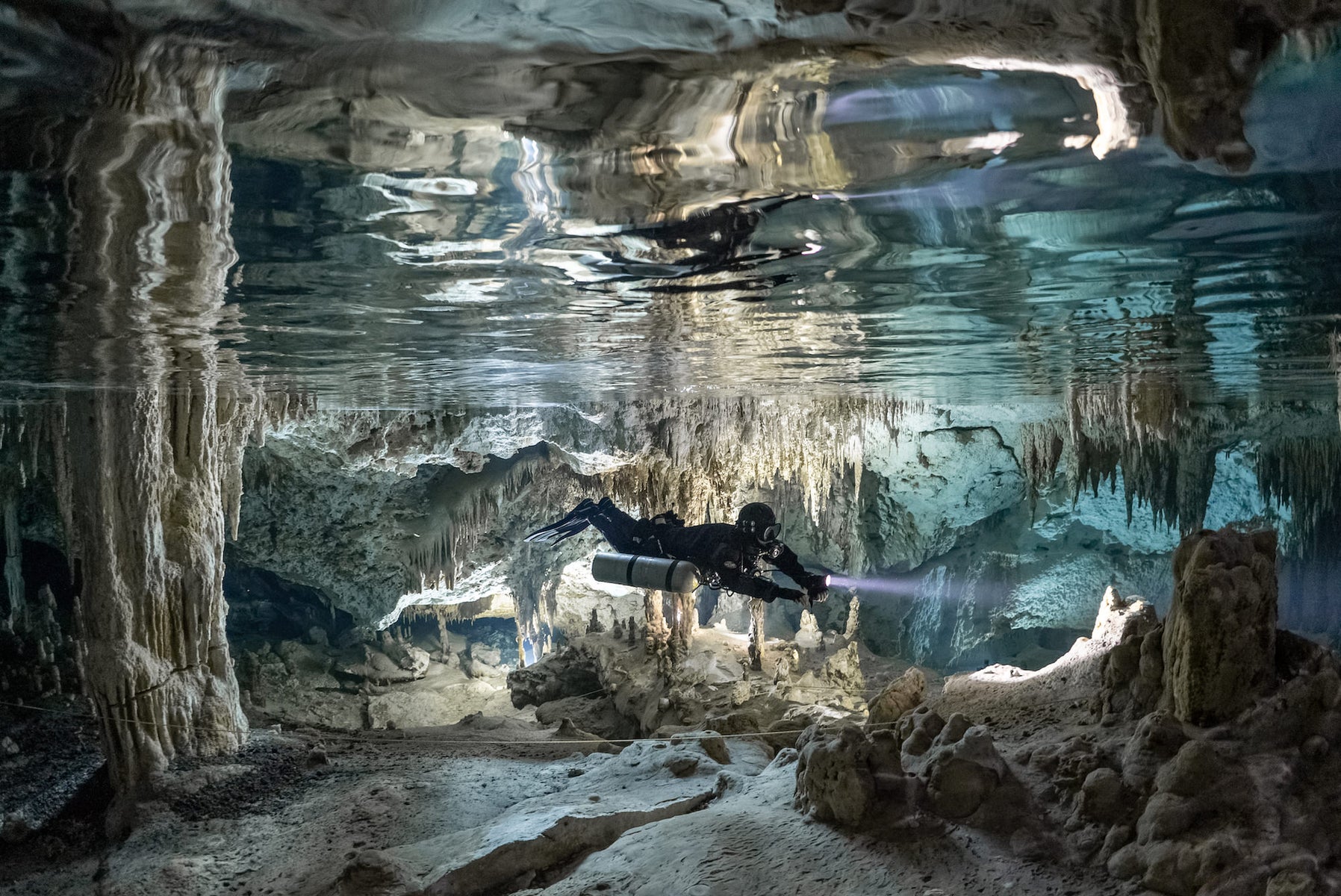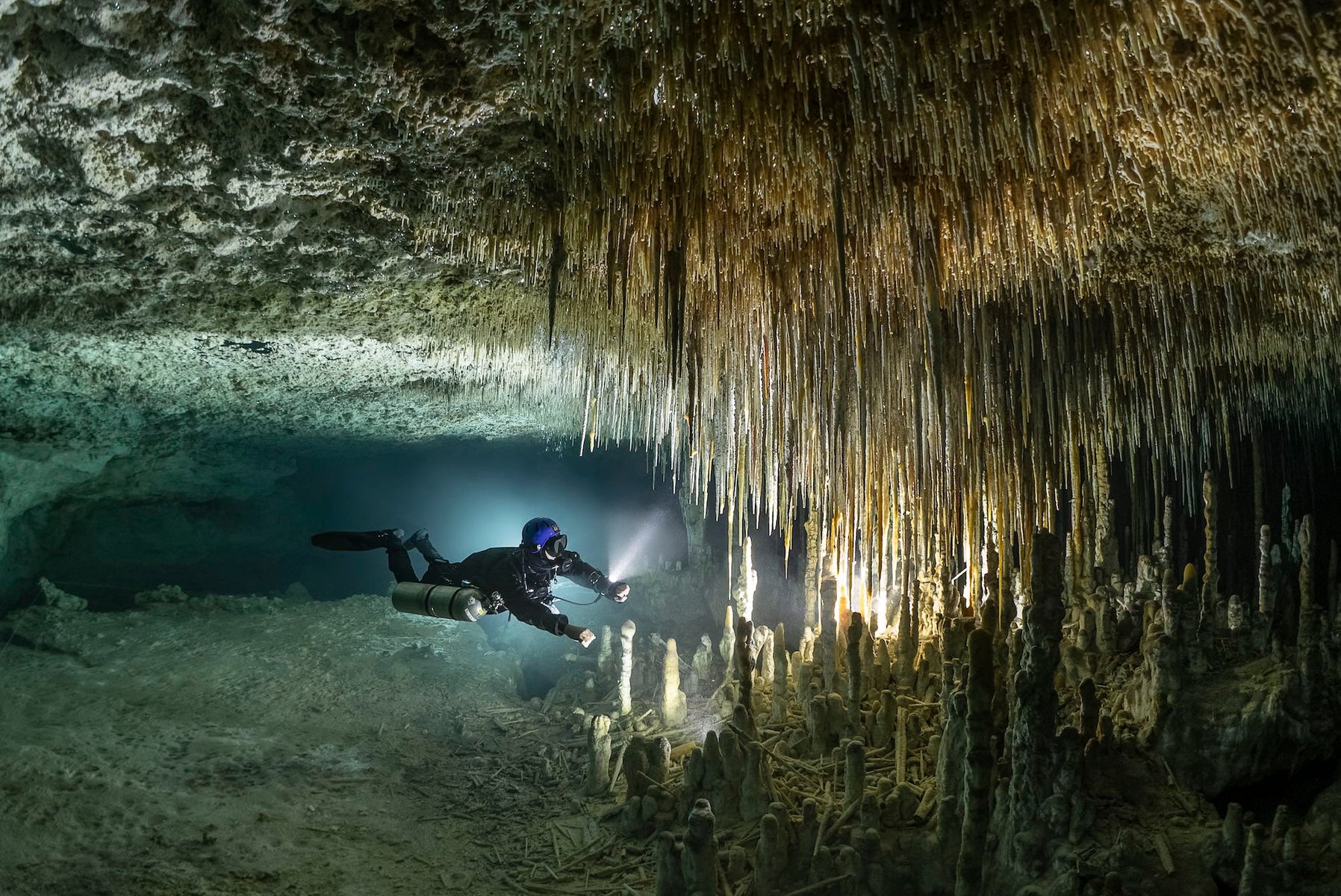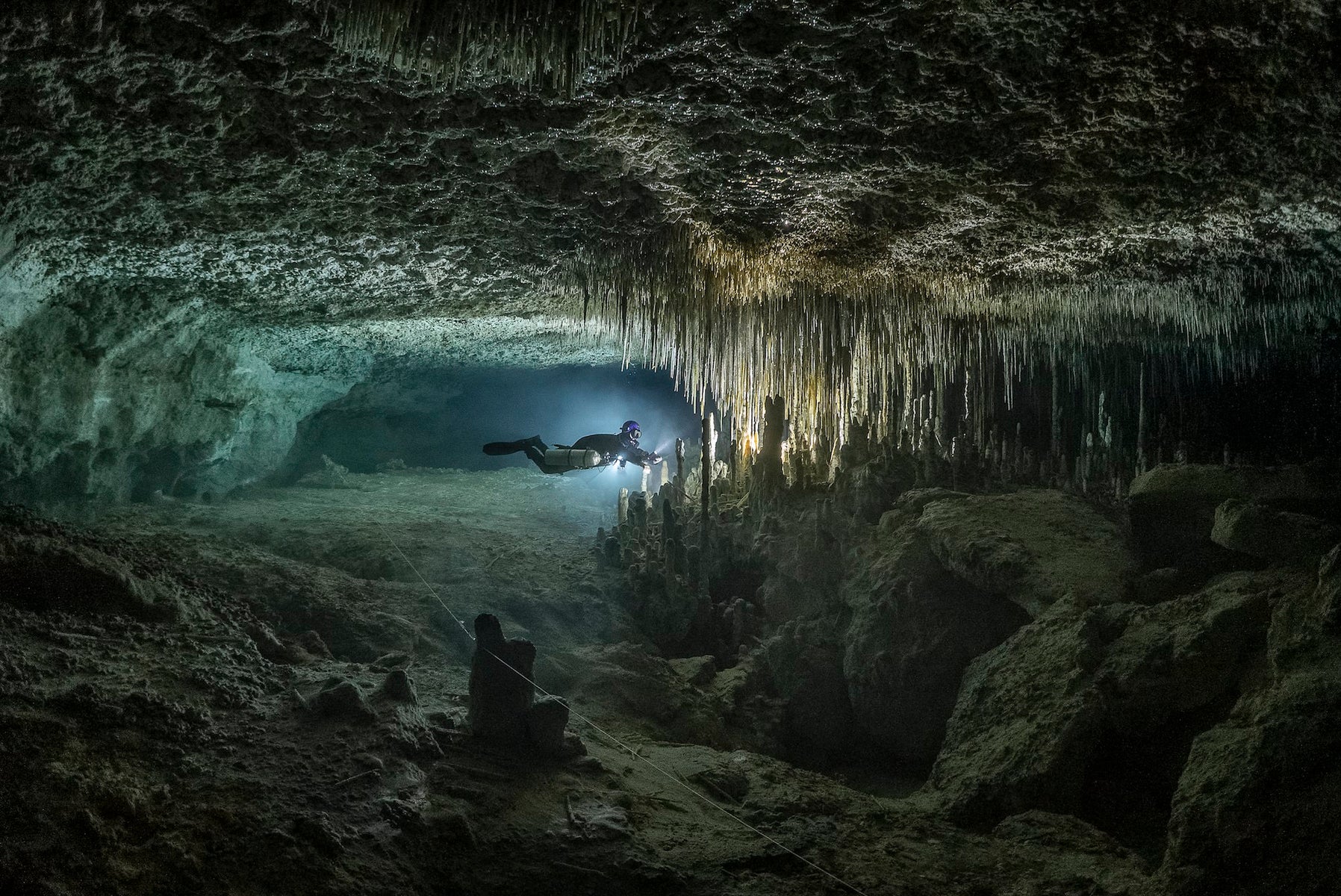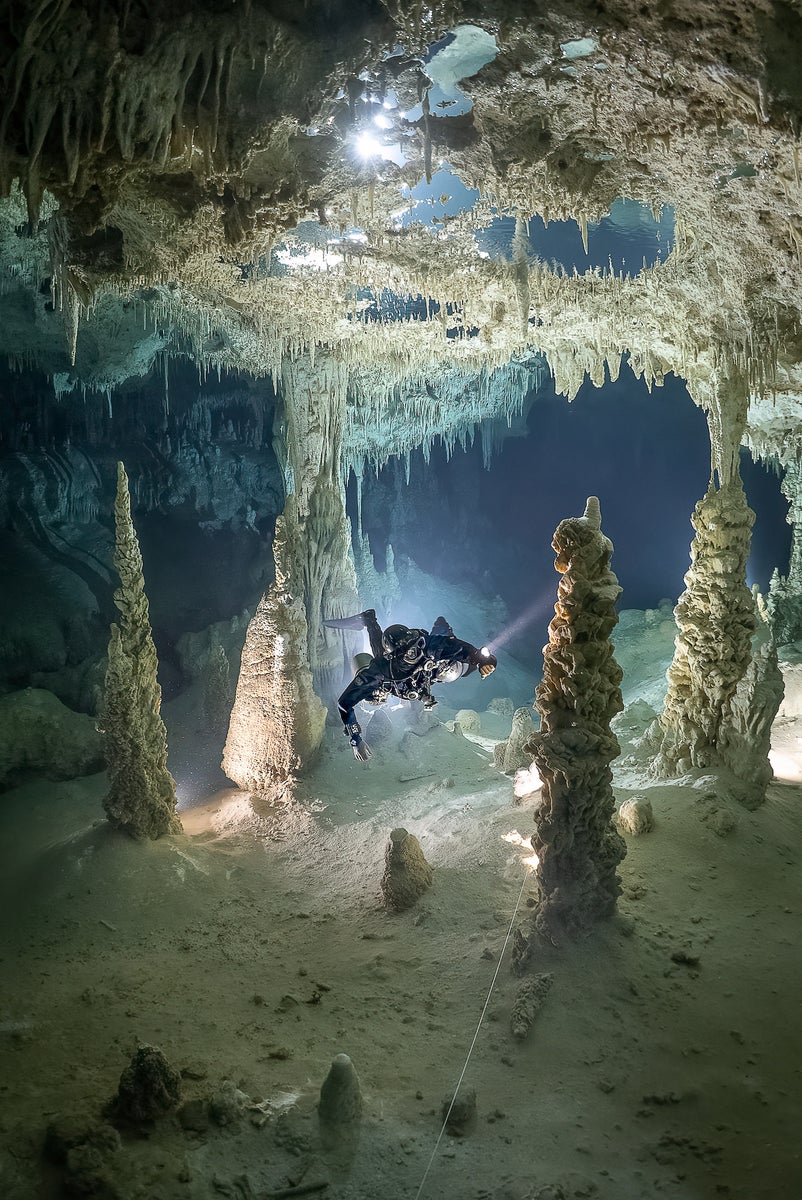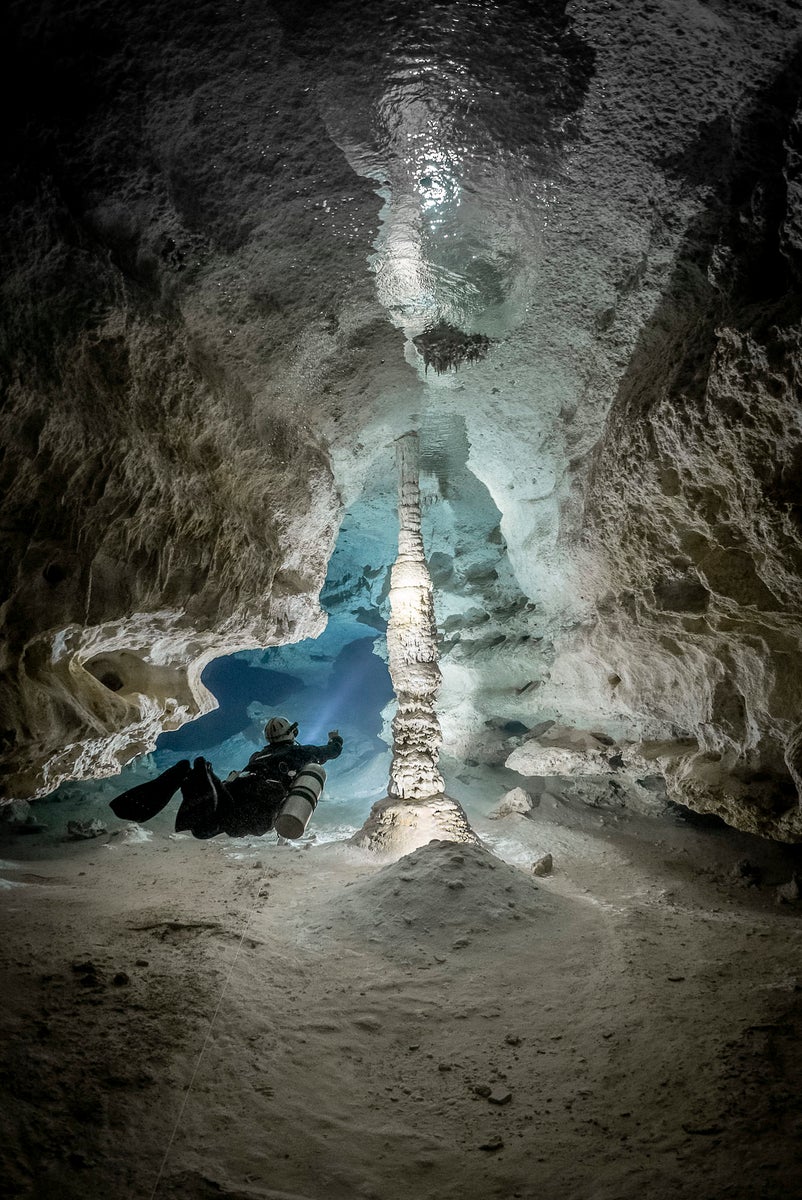Natalie Gibb (@underthejungle) photographs flooded caves. Originally from the United States, she’s lived on the east coast of Mexico’s Yucatan Peninsula for nearly 20 years. This area is home to the longest flooded cave systems in the world. As a cave diving instructor and dive center owner, she became interested in photographing and filming the cenotes and caves a few years ago. With zero prior photography experience, she came up with her own style of cave photography, using no on-board lights or strobes. She regularly shoots with up to nine off-camera video lights, which she stages around caves to create scenes. Compared to underwater photography with strobes, these are incredibly low-light images, and she credits the success of her photos to the exceptional low-light performance of her Sony Alpha 7S III. For Natalie, photography is a way to increase public awareness and promote the conservation of the underground aquifer.
Product Preview – In This Article You’ll Find:
–Sony Alpha 7S III
–Sony 28-70mm f/3.5-5.6
What’s in her bag? There’s no bag! For this style of photography, you need a pickup truck. Cave diving is one of the world’s most extreme sports, and getting the camera to the shoot location requires expert-level cave diving skills and a considerable quantity of scuba diving gear. We caught up with Gibb to learn more about what she uses to capture such mesmerizing underwater imagery.
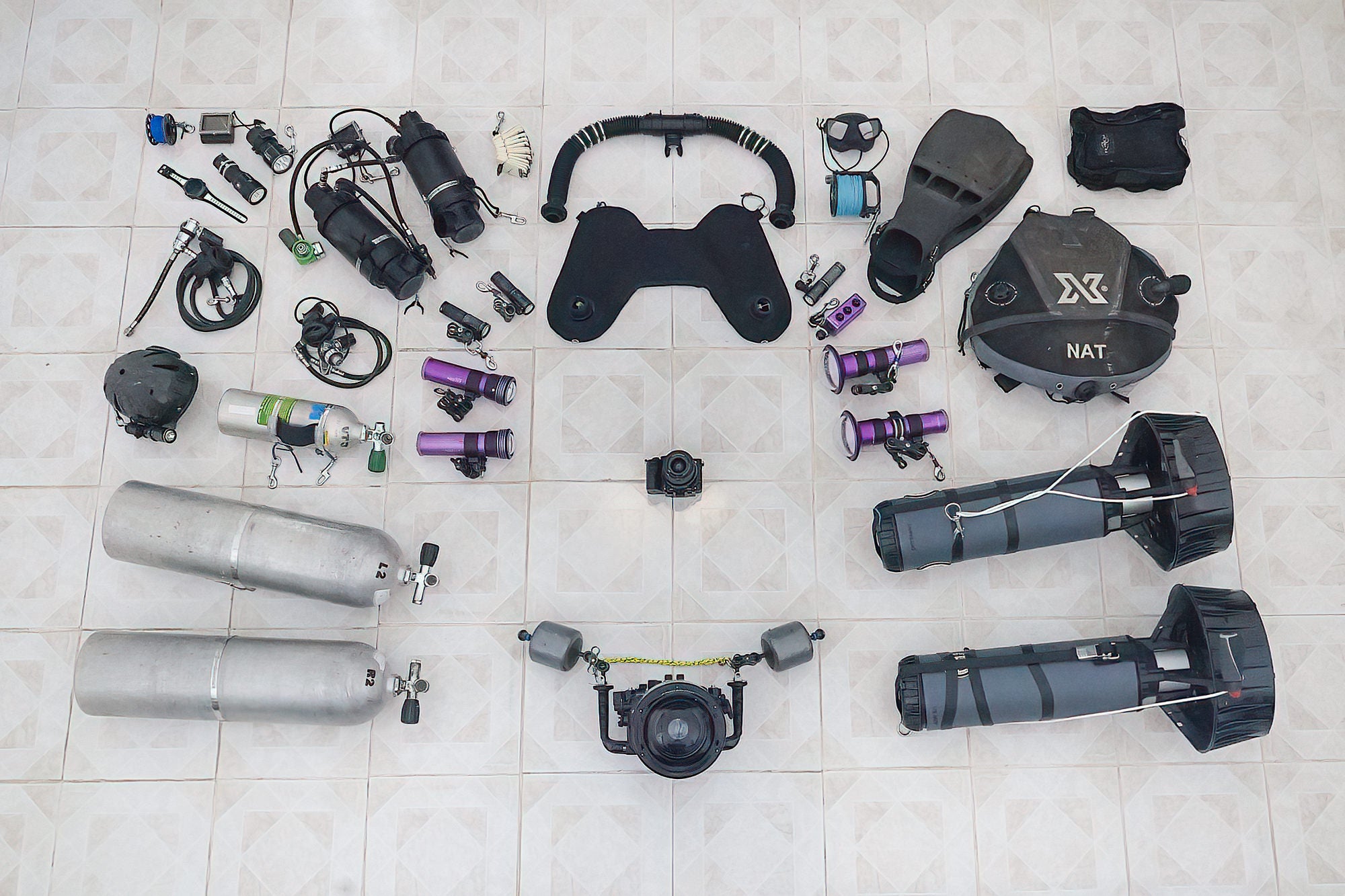
Camera
Sony Alpha 7S III: My first underwater camera was a Sony Alpha 7S, gifted to me by a friend who had upgraded his camera rig. I developed my style using this camera, which was exceptional for its time. Now, I shoot at Sony Alpha 7S III, which I have had since early 2021. The extreme dynamic range of the Sony Alpha 7S III makes it the perfect camera for low-light photography and videography. I can bounce the ISO to 12,800 with nearly zero noise and regularly shoot at ISO 20,000 with very little noise.

Photo by Natalie Gibb. Sony Alpha 7S III. Sony 28-70mm f/3.5-5.6. 1/30-sec., f/4, ISO 12800
I’ve even filmed a 4k video at 20,000 ISO in slow motion (120 fps), and it was spotless. The S-Log picture profiles allow endless creativity with color grading in post-production. I don’t know any other camera that can handle my style as flawlessly as the Sony Alpha 7S III.
Lens
Sony 28-70mm f/3.5-5.6: I have a simple Sony 28-70mm f/3.5-5.6 lens. This works for me because the needs of underwater photography are different from the needs of dry photography. Underwater photographers shoot through the glass or acrylic dome ports of their underwater housings, which bends light and affects the focus and edges of the images in interesting ways. I use a wide-angle conversion port on my housing, and this lens works perfectly with it. Believe it or not, due to the optical properties of the dome port, many of these images are shot at f/5.6.
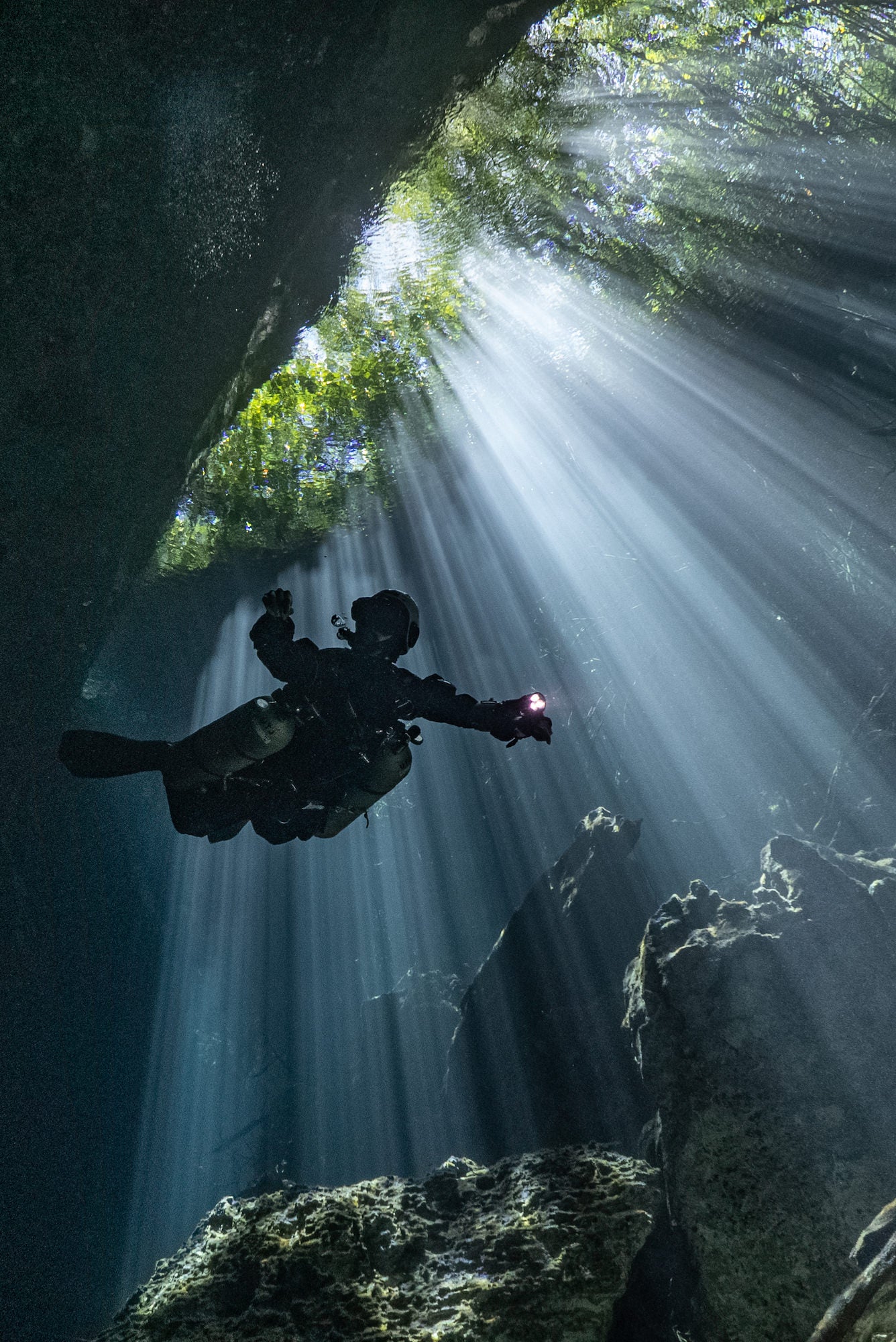
Photo by Natalie Gibb. Sony Alpha 7S III. Sony 28-70mm f/3.5-5.6. 1/125-sec., f/11, ISO 16000
Accessories
My gear is selected to get me to the shooting location safely.
Diving Gear: On a typical photography dive, I use two or more scuba diving cylinders, an XDeep diving harness, a KISS Sidewinder rebreather, and two diver propulsion vehicles (underwater scooters) to avoid swimming all that gear around.
Other Cave-Diving Tools: This image shows additional personal and cave diving tools, such as my mask, fins, reels and spools of cave line, primary light, and so forth. I also use a drysuit which I could not fit in this image!

Photo by Natalie Gibb. Sony Alpha 7S III. Sony 28-70mm f/3.5-5.6. 1/125-sec., f/4, ISO 12800
Nauticam Dive Housing: In addition to my Sony Alpha 7S III, my Nauticam dive housing and WACP1 dome port are critical equipment.
(4) Keldan Video Lights and other fill lights: Lighting is vital in this style of imagery, and I have four large Keldan video lights (the magenta ones) and a host of smaller fill lights which I clip to my harness until l am ready to shoot.
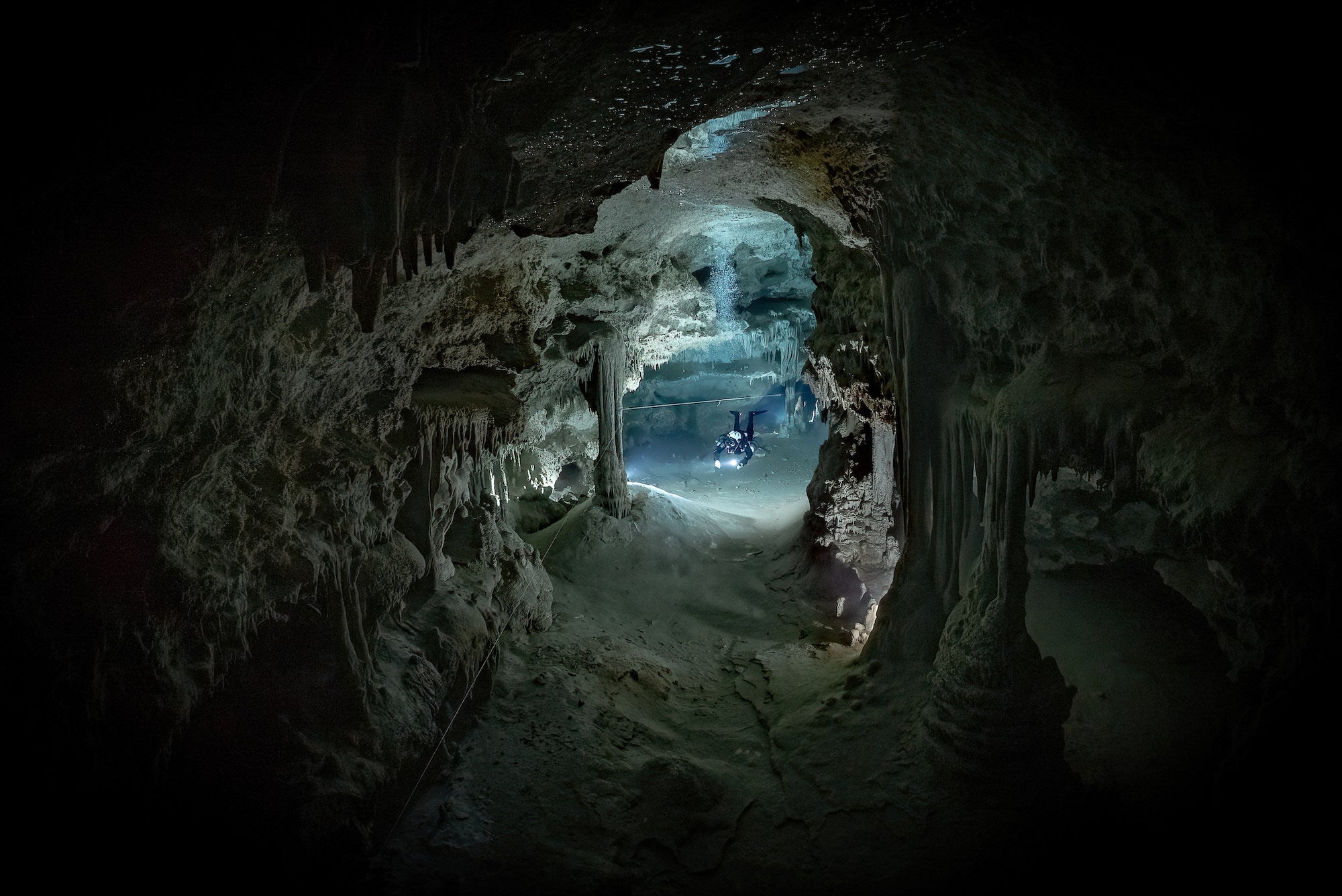
Photo by Natalie Gibb. Sony Alpha 7S III. Sony 28-70mm f/3.5-5.6. 1/30-sec., f/6.3, ISO 20000
All of this goes on my tiny 4”11” (152 cm) body, and I look like a ball of gear underwater. It’s a lot of equipment, but I think the results are worth it!
See more of Natalie Gibb’s work on Instagram @underthejungle.
